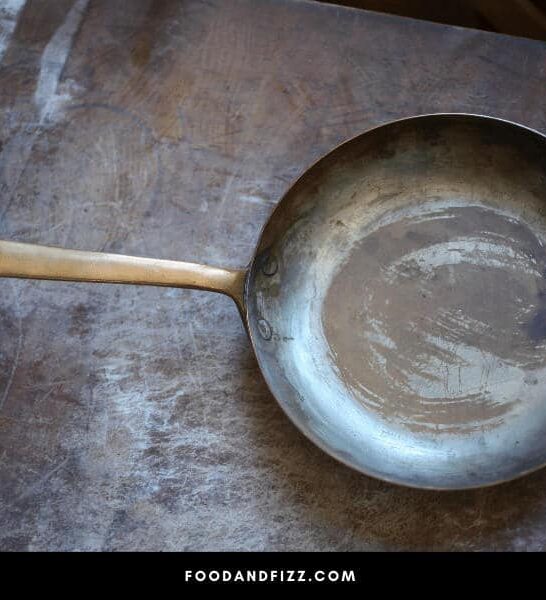So, you finally decide to cook tonight after surviving on takeout for a couple of weeks. You got all your fresh ingredients from the store and have them on standby, all prepped and ready to go.
You take out your pan and what you see stops you short. There on your lovely pan is the unwelcome and unappetizing sight of mold.
What should you do then? How do you get rid of that mold?
Mold in Pan
If there’s mold in your pan, you can soak the pan in warm water and dish soap, scrub when the mold has loosened, rinse and wash and soak in a water and bleach solution or boil water in the pot for a few minutes in order to sanitize. If the soapy water rinse doesn’t get rid of the mold, try soaking the pan in a water and vinegar solution before scrubbing and rinsing again. Just make sure that your pan is not cast iron or any other material that may be damaged by soaking in an acidic solution.
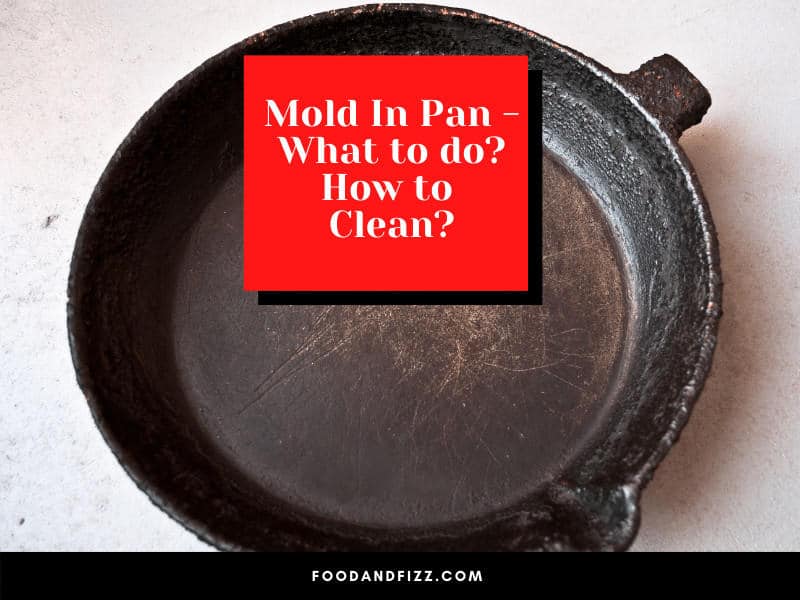
What Is Mold?
Mold is a type of fungus that grows and proliferates in environments that are damp, or where there is any type of matter that is decaying or rotting, which to be honest, is everywhere.
Mold is all around us, can grow indoors or outdoors under the right conditions, and is even present in the air we breathe. In short, we are pretty much exposed to it all the time.
Most types of mold are non-toxic, and pose no threat to healthy people with healthy immune functioning. There is a group though called “black mold” or toxic mold, that is said to produce toxins called mycotoxins which may be dangerous when ingested, especially to those with weakened immune systems.
There are also people who are allergic to mold, and as such, even harmless mold may pose a threat to their health.

How Does Mold Grow?
Mold will begin to grow and thrive when conditions are just right. How much they grow and proliferate ultimately depends on four factors.
Humidity or Level of Moisture in the Air
Mold thrives where moisture is present and in humidity levels of 70% or above, mold can begin to proliferate.
Food Source
Mold will eat up any kind of organic matter, not just the food that we eat. This means that wood, soil, plants, and even fabrics can feed mold, and cause it to spread.
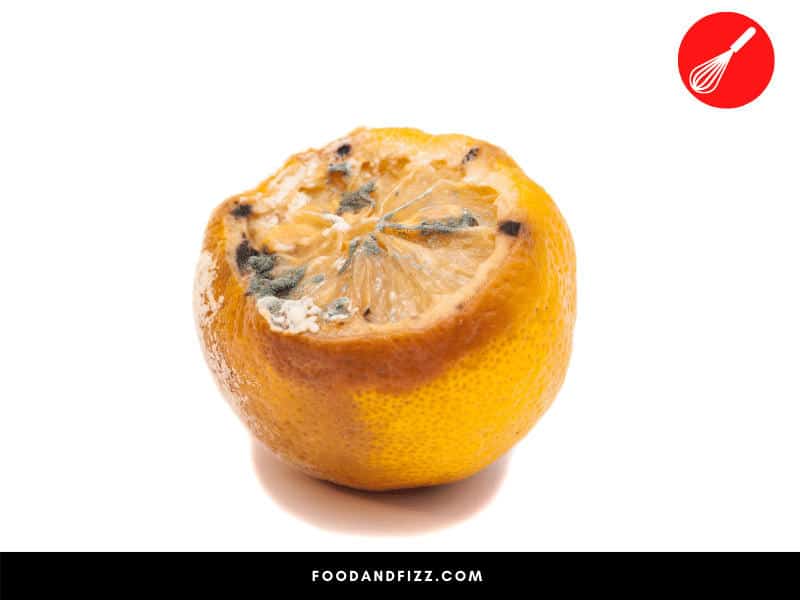
Oxygen
Mold also needs oxygen to survive but can thrive in conditions with low oxygen.
Temperature
In general, mold doesn’t grow in temperatures below 40 °F. Temperatures higher than that, especially around the food danger zone of 40 °F – 140 °F, are prime conditions for mold growth.
Mold in Pan – What to Do and How to Clean?
Even if most mold is not toxic, it’s still not something you would want to ingest or see on your food or anything that touches your food.
Outlined below are the basic steps you can follow to help you get rid of the mold on those pots and pans.
Step 1: Soak
Fill your sink with warm water. Add some dish soap and soak your pan in the soapy water until the mold loosens.
Step 2: Wear Gloves and Scrub
First, wear gloves to avoid contact with the moldy substance. Next, scrub off the mold using a kitchen sponge, paper towel, or scrubbing pad until it comes off. Throw away what you used to scrub the mold off, you won’t want to use that sponge again.
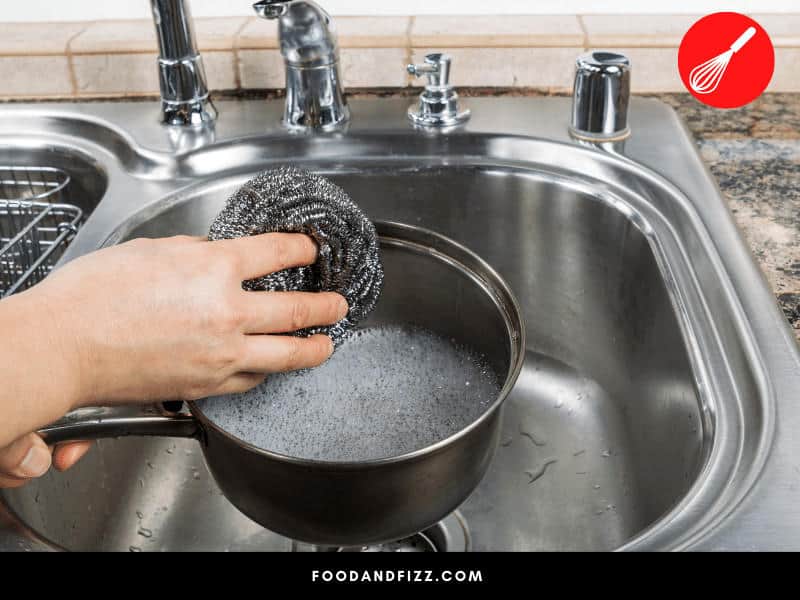
Step 3: Rinse
Rinse off the pan and then wash again to remove the remaining traces of mold.
Step 4: Sanitize
When you have scrubbed off, rinsed and washed off all the mold, you can sanitize your pan by boiling clean water in it or by soaking it in a diluted bleach solution for a few minutes.
According to the organization Stop Food Borne Illness, a ratio of 1 tablespoon of unscented liquid chlorine bleach diluted with 1 gallon of cool water is sufficient to sanitize dishes.
It is important to use cool water and not warm water, as warm water prevents the bleach from doing what it’s supposed to do. After soaking in this solution for a few minutes, allow your pan to air dry.
Step 5: Air Dry
After air drying, your pan should be sparkly clean, mold-free, and ready to use again.
Is Vinegar Effective in Cleaning Mold?
White vinegar is very useful in cleaning the kitchen, and it may also be used to clean dishes, pots and pans. Because it is acidic, it can kill and get rid of mold. However, it would depend on the material of your moldy pan.
Cast-iron pans do not do well with any type of acidic cleanser as these may cause damage to the coating of the pan. Stainless steel pans and pots, on the other hand, can hold up to cleaning with a vinegar and water solution.
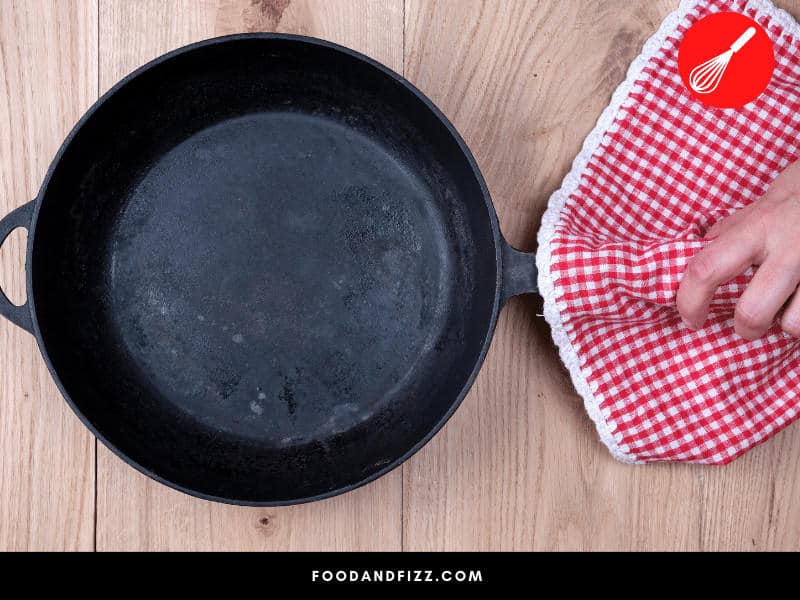
What Happens When You Ingest Mold?
If you accidentally ingest mold in small amounts, it is important to monitor yourself for symptoms. It is likely that nothing will happen and you will be fine.
However, in bigger amounts and if you have allergies, you may develop symptoms such as vomiting, diarrhea and respiratory problems. If this happens, it is important to seek medical attention right away.
Conclusion to Mold In Pan
It is not the end of the world if you find yourself with some moldy pots and pans. There are ways to effectively clean them without having to resort to throwing them away.
However, rather than always being reactive to mold growth, it might be better to also make sure that we take steps to make sure we minimize the chance of it happening at all. Prevention is always the better option.
While most types of mold are not toxic, there are certain types that produce toxins that can be detrimental to our health. For people with allergies, ingesting mold can be dangerous and can cause respiratory issues that are serious medical emergencies.
This is why it is important to always be mindful of our environment, the food we buy and how we store them, to minimize the chance of mold growing in our homes.
It is also important to properly clean all pots, pans, and dishes after each use and to properly dispose of spoiled food so that we do not encourage the type of environment where mold can freely grow.
Frequently Asked Questions to Mold in Pan
There is Mold in My Pan. Should I Throw It Away?
Often, moldy pots and pans can still be saved and do not need to be thrown away. Moldy pots and pans can be cleaned by soaking in dish soap and water, scrubbing, rinsing, and sanitizing with a bleach or vinegar solution.
Is Vinegar Effective in Cleaning Moldy Pans?
A water and vinegar solution can be used to get rid of and kill mold in stainless steel pots and pans, but it is not advisable to use for cast iron pans as the vinegar might cause damage to the coating of the cast iron pan.

